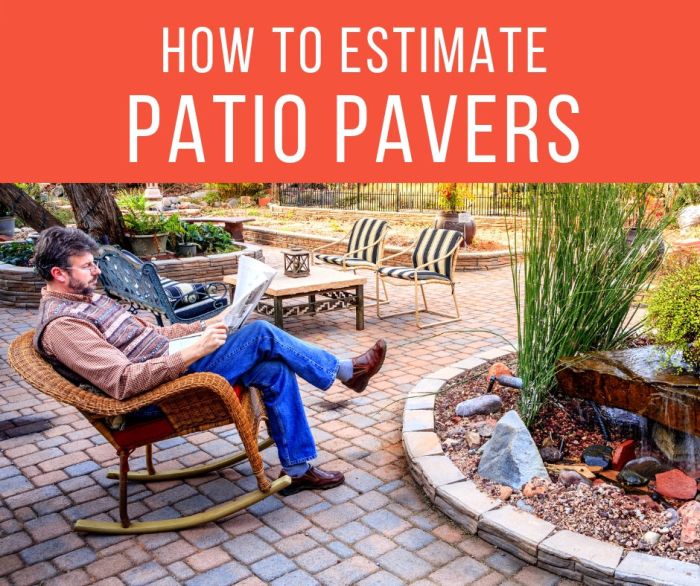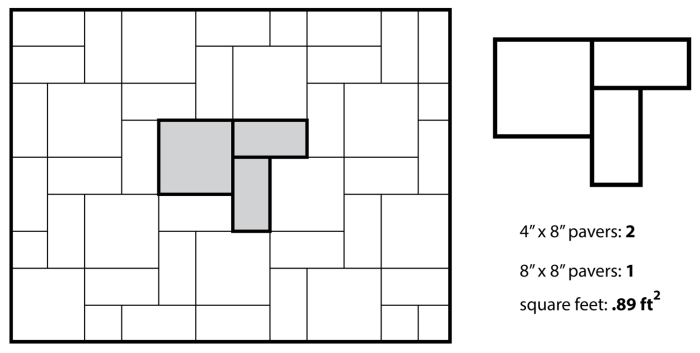Are you dreaming of a beautiful paver patio to enhance your outdoor living space? Creating a paver patio is an excellent way to add value, functionality, and aesthetic appeal to your home. But before you embark on this exciting project, it’s crucial to have a clear understanding of the costs, design options, and installation process involved.
This comprehensive guide will provide you with all the essential information you need to plan and execute your paver patio project with confidence. From choosing the right materials and design elements to site preparation, paver installation, and maintenance, we’ll cover every aspect to ensure a successful outcome.
Material Considerations
Choosing the right material for your paver patio is essential for ensuring its durability, aesthetics, and cost-effectiveness. Here’s a guide to the most common paver materials, their characteristics, and factors to consider when making your selection.
Concrete Pavers
- Durability: Concrete pavers are highly durable, lasting for decades with minimal maintenance.
- Cost: They are relatively affordable, making them a cost-effective option.
- Maintenance: Concrete pavers require occasional cleaning and sealing to maintain their appearance.
Brick Pavers
- Durability: Brick pavers are extremely durable, with a lifespan of over 100 years.
- Cost: They are more expensive than concrete pavers but offer a classic and timeless look.
- Maintenance: Brick pavers require regular cleaning and sealing to prevent fading and damage.
Natural Stone Pavers
- Durability: Natural stone pavers are highly durable and can last for centuries.
- Cost: They are the most expensive option but offer a unique and luxurious look.
- Maintenance: Natural stone pavers require minimal maintenance but may need occasional sealing to protect them from stains.
Factors to Consider
- Climate: Choose pavers that are suitable for your local climate conditions, such as freeze-thaw cycles or heavy rainfall.
- Usage: Consider the intended use of your patio, such as foot traffic, heavy equipment, or vehicle parking.
- Aesthetics: Select pavers that complement your home’s architecture and personal style.
- Budget: Determine your budget and choose pavers that fit within your financial constraints.
Design Elements
When designing a paver patio, you have a wide range of options to create a unique and attractive outdoor space. From the shape and size of the patio to the pattern and color of the pavers, every element contributes to the overall aesthetic appeal.
Incorporating design elements into your paver patio can enhance its visual interest and make it a more inviting and enjoyable space. Here are a few tips for designing a paver patio with style:
Shapes and Sizes
Paver patios can be any shape or size, so you can choose one that best fits your space and needs. Popular shapes include rectangles, squares, circles, and ovals. You can also create more complex shapes by combining different paver sizes and shapes.
Patterns
There are endless possibilities when it comes to paver patterns. You can create simple patterns like running bond or herringbone, or you can get more creative with complex patterns like basket weave or pinwheel. The pattern you choose will depend on the style of your patio and the overall look you want to achieve.
Colors
Pavers come in a wide range of colors, so you can choose a color that complements your home and landscape. You can also use multiple colors to create a more dynamic look. When choosing colors, consider the overall style of your patio and the colors of your home and landscape.
Examples of Paver Patio Designs
Here are a few examples of paver patio designs with varying levels of complexity:
- Simple paver patio: A simple paver patio is a great option for small spaces or for those who want a low-maintenance patio. A simple patio can be made using a single color and pattern, or you can use multiple colors to create a more interesting look.
- Complex paver patio: A complex paver patio is a great option for those who want a more unique and stylish patio. Complex patios can be made using a variety of shapes, sizes, and patterns. You can also use different colors to create a more dynamic look.
- Multi-level paver patio: A multi-level paver patio is a great option for those who want to create a more interesting and visually appealing space. Multi-level patios can be made using different levels of pavers to create a more dynamic look.
Site Preparation
Preparing the site for your paver patio is a crucial step that ensures a solid and long-lasting foundation. Proper drainage and soil compaction are essential to prevent settling, cracking, or shifting of the pavers.
Site preparation typically involves excavating the area, creating a base for the pavers, and ensuring proper drainage.
Excavation
- Mark the perimeter of the patio and excavate the area to a depth of 6-8 inches.
- Remove any vegetation, rocks, or debris from the excavated area.
- Grade the bottom of the excavation to create a level surface.
Base Creation
- Spread a layer of compacted gravel, crushed stone, or sand over the excavated area.
- Compact the base material thoroughly using a plate compactor or hand tamper.
- The thickness of the base will vary depending on the soil conditions and the size of the pavers.
Drainage
- Install a drainage system, such as a French drain or perforated pipe, to prevent water from accumulating under the patio.
- Slope the patio slightly away from the house or other structures to direct water runoff.
- Ensure that the drainage system is connected to a suitable discharge point.
Paver Installation
Installing pavers on a patio involves meticulous steps to ensure a stable, level, and aesthetically pleasing surface. The process entails preparing the base, laying the pavers, and securing them in place.
The first step is to create a solid foundation by compacting the soil and laying down a layer of gravel or crushed stone. This base provides drainage and support for the pavers.
Cutting and Fitting Pavers
Pavers are typically cut using a wet saw or a diamond blade on a grinder. Precise cuts are crucial for achieving a clean and uniform fit. To ensure a snug fit, pavers should be cut slightly smaller than the intended space.
Creating a Stable and Level Surface
Once the pavers are cut, they are laid in a herringbone or running bond pattern. Each paver is gently tapped into place using a rubber mallet, ensuring they are level and firmly seated. To create a stable surface, polymeric sand is spread over the pavers and swept into the joints, locking them together.
Grouting and Sealing
Grouting and sealing are essential steps in completing a paver patio. Grouting fills the spaces between the pavers, providing stability and preventing weeds from growing. Sealing protects the pavers from stains, fading, and other damage.
There are several types of grout available, including polymeric sand, mortar, and epoxy. Polymeric sand is a dry, sand-like material that is easy to apply and provides a flexible joint. Mortar is a cement-based grout that is stronger and more durable than polymeric sand.
Epoxy is a two-part grout that is very strong and resistant to chemicals.
Sealers are also available in a variety of types, including water-based, solvent-based, and penetrating. Water-based sealers are easy to apply and provide a clear finish. Solvent-based sealers are more durable than water-based sealers, but they can be more difficult to apply.
Penetrating sealers soak into the pavers and provide protection from the inside out.
Applying Grout and Sealer
To apply grout, first sweep the pavers to remove any dirt or debris. Then, apply the grout according to the manufacturer’s instructions. Once the grout has dried, seal the pavers according to the manufacturer’s instructions.
Maintenance and Repairs
Regular maintenance is essential to preserve the beauty and longevity of your paver patio. By following a proactive maintenance plan, you can prevent minor issues from escalating into costly repairs.
Over time, your paver patio may require occasional repairs. Common issues include cracked or broken pavers, shifting joints, and weed growth. Timely repairs will restore the functionality and aesthetics of your patio.
Cleaning
- Sweep or blow off loose dirt and debris regularly.
- Pressure wash the patio using a low-pressure setting and a wide spray nozzle to avoid damaging the pavers.
- Use a mild cleaning solution specifically designed for pavers to remove stubborn stains.
Repairing
- Replace cracked or broken pavers promptly to prevent further damage.
- Repair shifting joints by removing the loose sand and replacing it with fresh polymeric sand.
- Control weed growth by applying a pre-emergent herbicide and removing existing weeds by hand or using a weed killer.
Resealing
- Reseal your paver patio every 2-3 years to protect it from moisture, stains, and fading.
- Use a high-quality paver sealer designed for your specific type of pavers.
- Follow the manufacturer’s instructions carefully to ensure proper application and protection.
Final Summary
With careful planning and execution, you can create a stunning paver patio that will be the envy of your neighborhood. Whether you opt for a classic or contemporary design, a paver patio will provide years of enjoyment and enhance the value of your property.
So, gather your inspiration, choose the perfect materials and design, and get ready to transform your outdoor space into a sanctuary of relaxation and entertainment.



